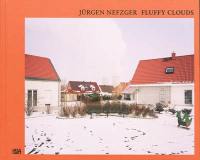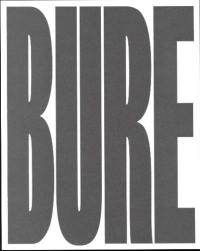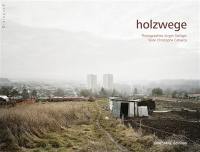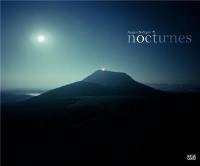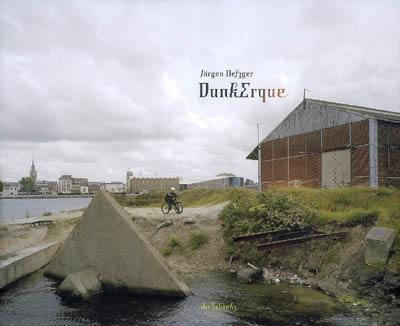
Fiche technique
Format : Relié sous jaquette
Nb de pages : 118 pages
Poids : 1102 g
Dimensions : 26cm X 31cm
ISBN : 978-2-915639-78-0
EAN : 9782915639780
Quatrième de couverture
À Dunkerque, Jürgen Nefzger explore la périphérie de la ville : un lieu déterminant pour saisir l'actualité de notre culture urbaine. C'est ici que la ville se fait au présent. C'est ici aussi qu'elle est en conflit avec l'environnement rural. Sur cette frontière, les contradictions sont lisibles, et le photographe peut disséquer le corps aux contours imparfaits que constitue la masse urbaine.
Sa série dunkerquoise évoque à plusieurs reprises le langage pictural romantique, ou encore celui d'une certaine poétique de la zone, comparable à celle que l'on peut trouver dans les films de Tarkovski ou d'Antonioni.
Connu pour ses paysages industriels et périurbains, Jürgen Nefzger semble porter le regard ailleurs que ce sur quoi il est attendu. Dans le combat qui oppose le paysage naturel au paysage industriel, il invite un troisième acteur : les habitants. L'espace indéfini, entre la ville et sa zone portuaire, devient un espace public au sens fort du terme, où les individus prennent place librement.
En marge d'imposantes installations industrielles, Nefzger découvre des territoires inoccupés, délaissés, tranquillement réinvestis. Tout se passe dans cet espace hybride, impur, inqualifiable faute de catégorie adéquate pour le classer : hors de l'enceinte urbaine, à la lisière des sites industriels, mais pas assez éloigné pour être considéré comme naturel.
In Dunkirk, Jürgen Nefzger explores the periphery of the town : a crucial place to capture the state of a given urban culture. This is where the town is growing today. It is here that it is in conflict with the rural environment. At this frontier, contradictions are evident, and the photographer can dissect the body of urban sprawl and its imperfect outlines.
His Dunkirk series regularly evokes Romantic pictorial language or that of a certain poetics of the zone, which is comparable to that found in films by Tarkovsky or Antonioni.
Nefzger is known for his industrial and suburban landscapes but this time he does not seem to have looked where he was expected. In the battle that opposes the natural landscape to the industrial landscape. Nefzger invites a third actor : the inhabitants. The undefined space between the city and its harbour area becomes a public space in a strong sense of the word, where individuals take their place freely.
On the margins of imposing industrial installations, he discovers the calm of unoccupied, abandoned territories being quietly reclamed. This all happens in a hybrid, imperfect space that cannot be labelled due to the lack of an adequate category : it is outside the urban zone, at the edge of the industrial sites, but not far enough away to be considered as natural.
Jürgen Nefzger erforscht die Umgebung der Stadt Dünkirchen. Die Peripherie ist der ausschlaggebende Ort, um etwas über den Zustand unserer heutigen Stadtkultur zu erfahren. Hier ist die Stadt gegenwartig und hier tritt sie auch in Konflikt mit der ländlichen Umgebung. An dieser Grenze sind Widersprüche eindeutig ablesbar und der Fotograf kann den unförmig umrissenen Moloch Stadt in seine Einzelteile zerlegen.
In den Bildern, von Dünkirchen macth er immer wieder Anleihen an die romantische Bildsprache oder die Poesie der Vorstädte, eine Eigenart, die auch für die Filme Tarkovskis und Antonionis bezeichnend ist.
Bekannt wurde Nefzger vor allem für seine Aufnahmen von Industrielandschaften und Stadtrandgebieten, doch scheint er den Blick immer wieder auf etwas anderes zu richten, als auf das, was man gerade von ihm erwartet. Im Wettstreit zwischen Natur-und Industrielandschaft bezieht Nefzger noch eine dritte Komponente ein : die Bewohner. Der leere Raum zwischen Stadt- und Hafengebiet entwickelt sich zu einem öffentlichen Raum im besten Sinne des Wortes, weil sich die Menschen dort frei entfalten können.
Am Rande der beeindruckenden Industrieanlagen entdeckt Nefzger unbebaute und verlassene, von den Anwohnern behutsam wieder genutzte Flächen .Alles spielt sich in diesem hybriden, unklaren und undefinierbaren Raum ab, für dessen Beschreibung jeder Massistab zu fehlen scheint : Er liegt ausserhalb des Stadkerns und befindet sich zugleich inder Randzone der Industriegebiete, ist aber noch nicht weit genug entfernt, um wieder als ratürlich gelten zu können.





